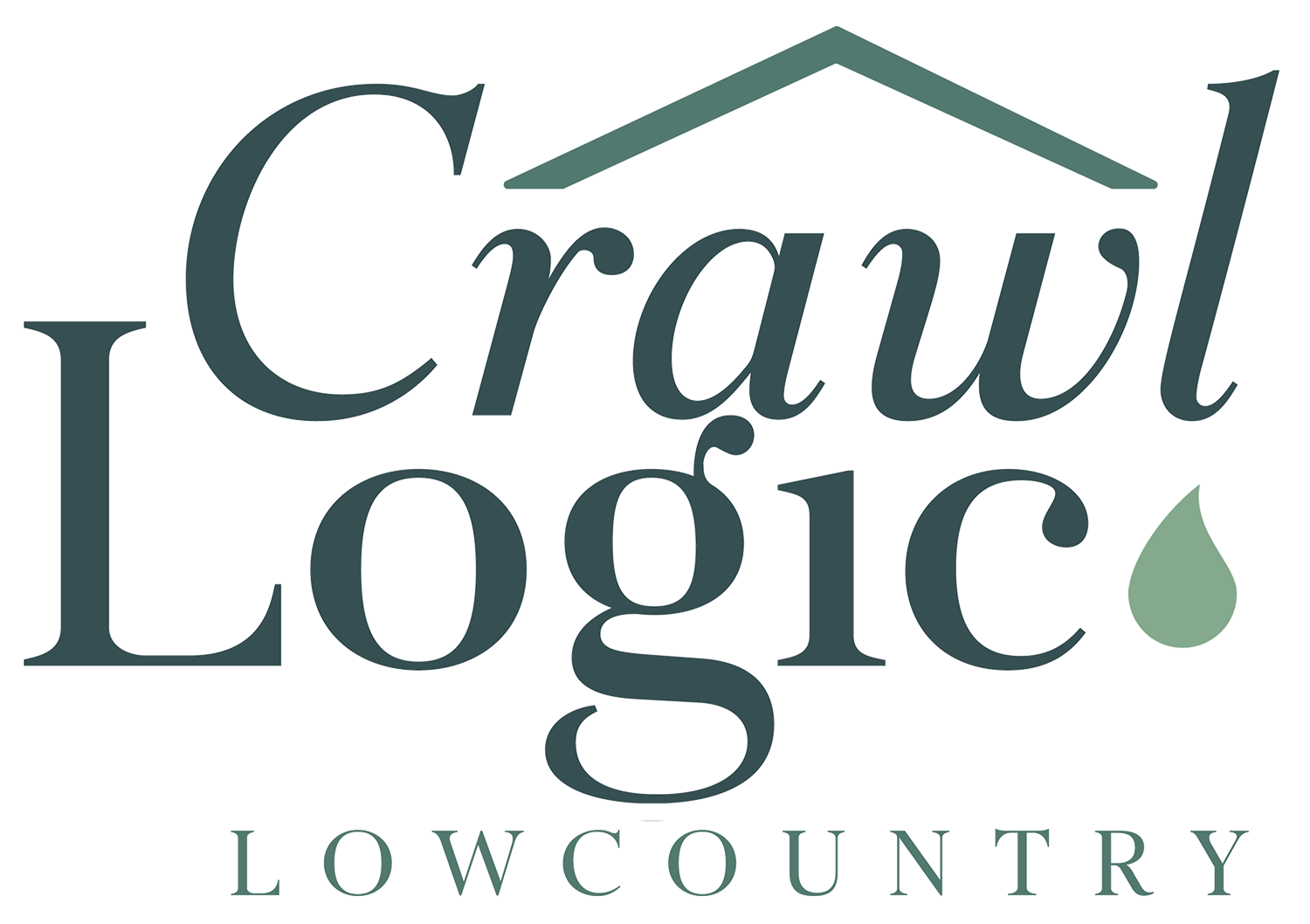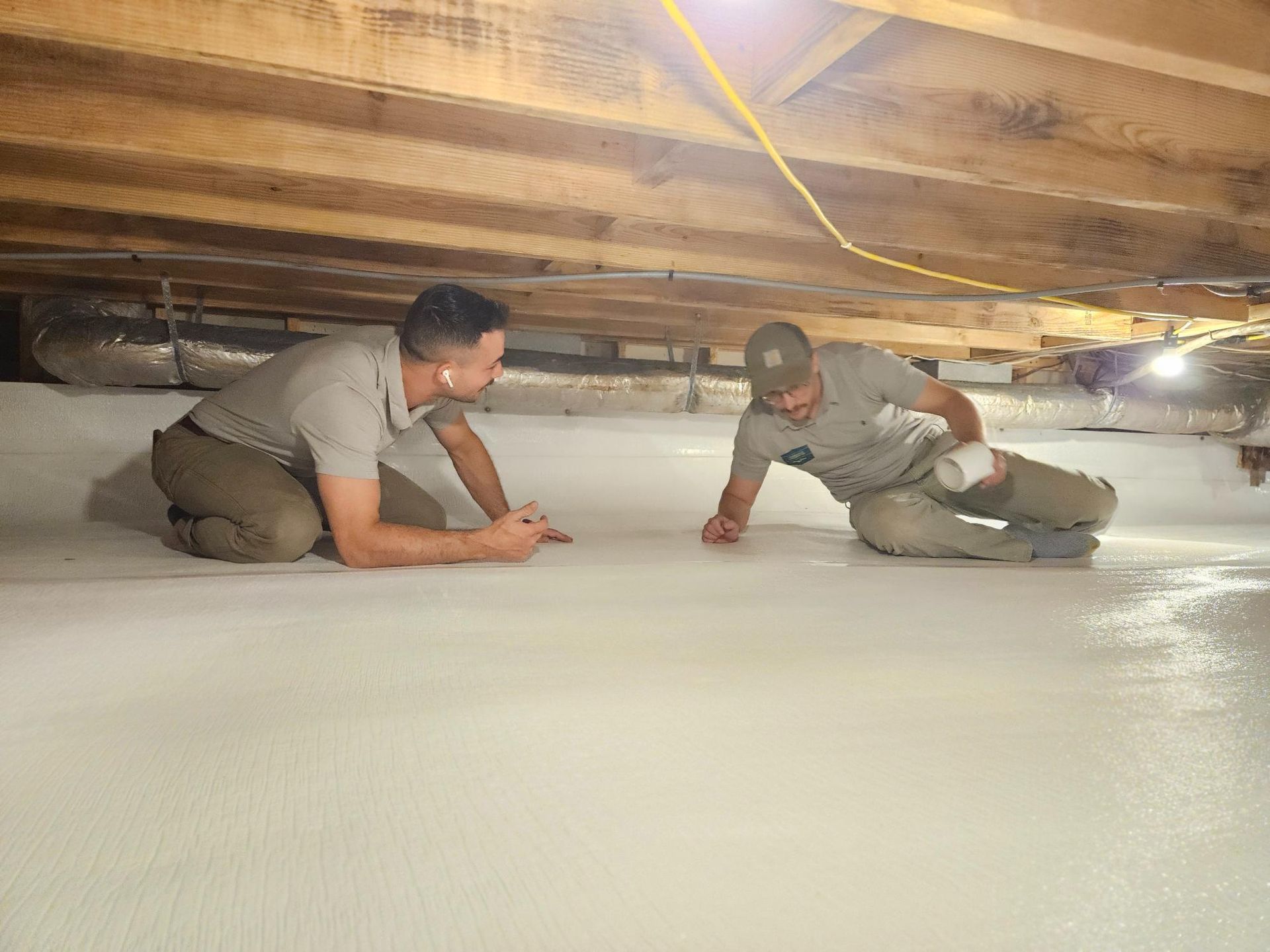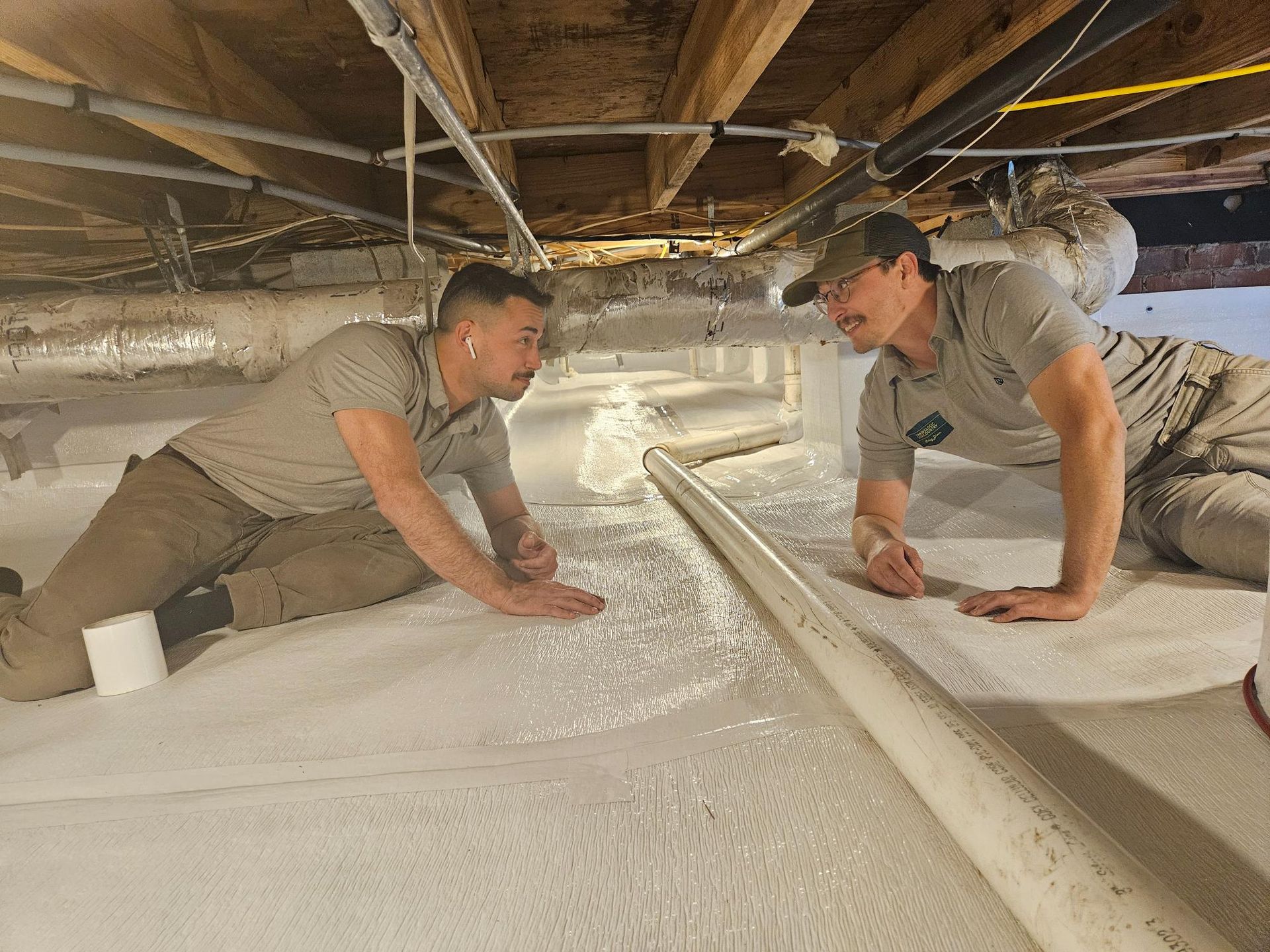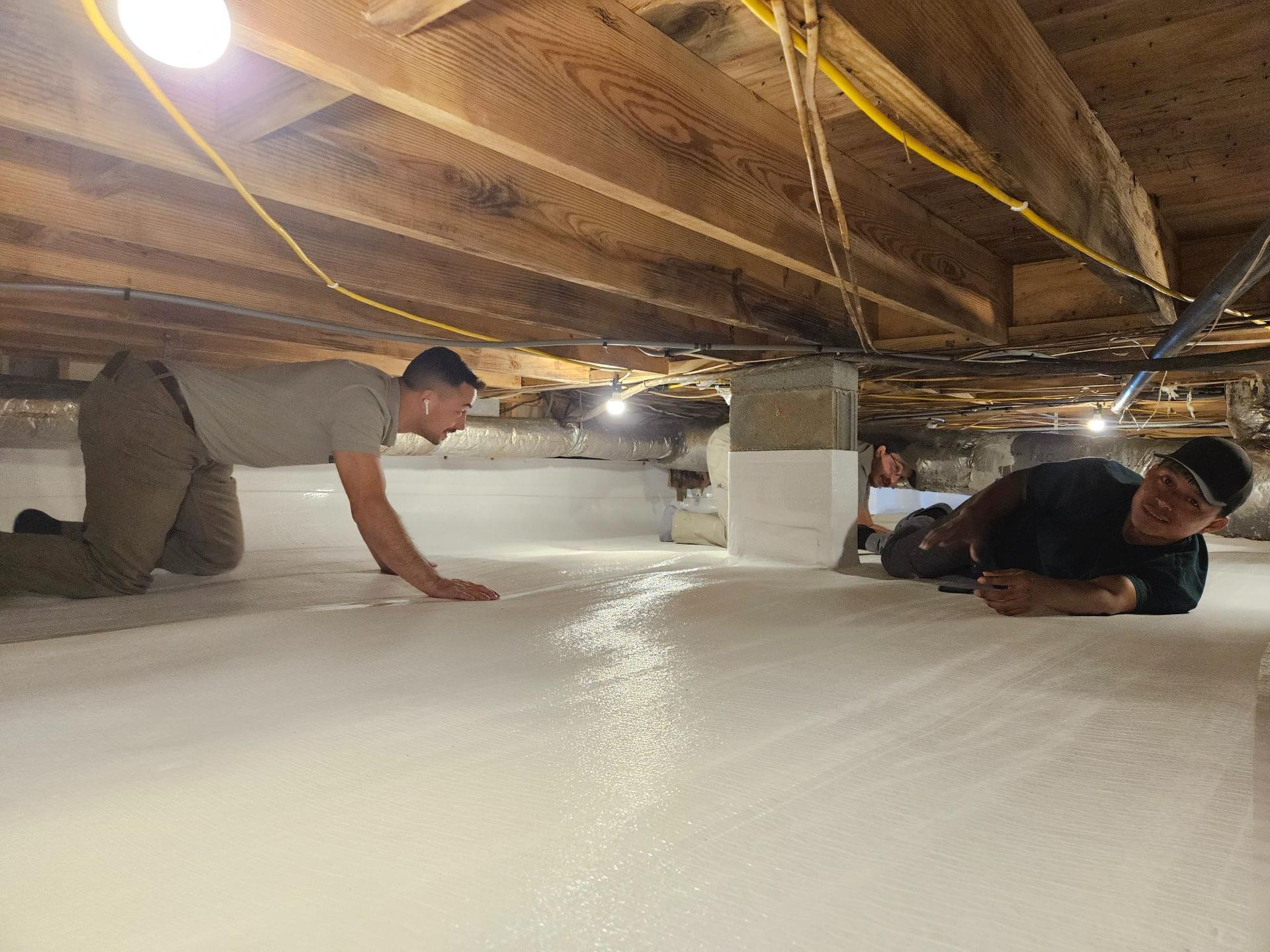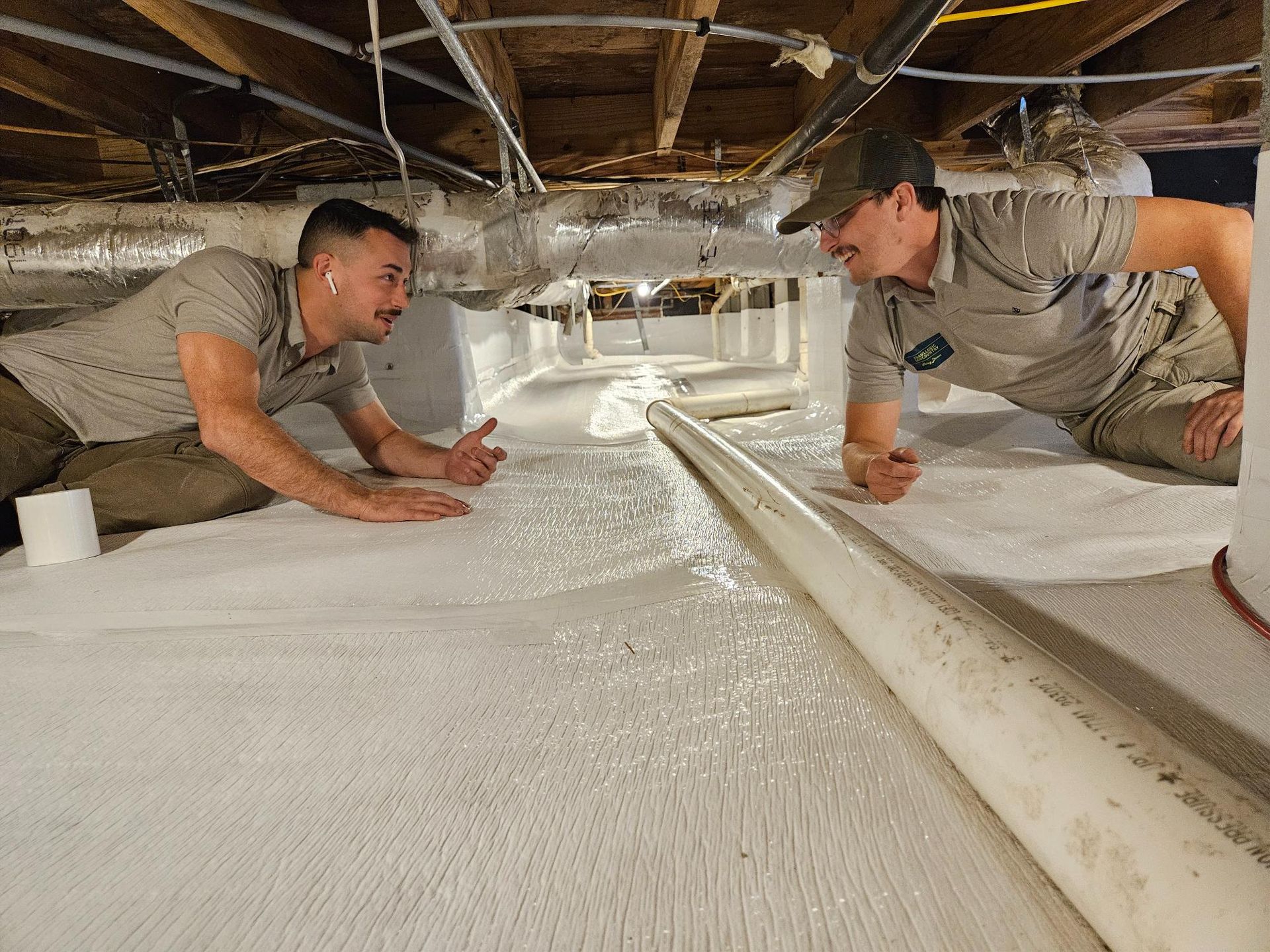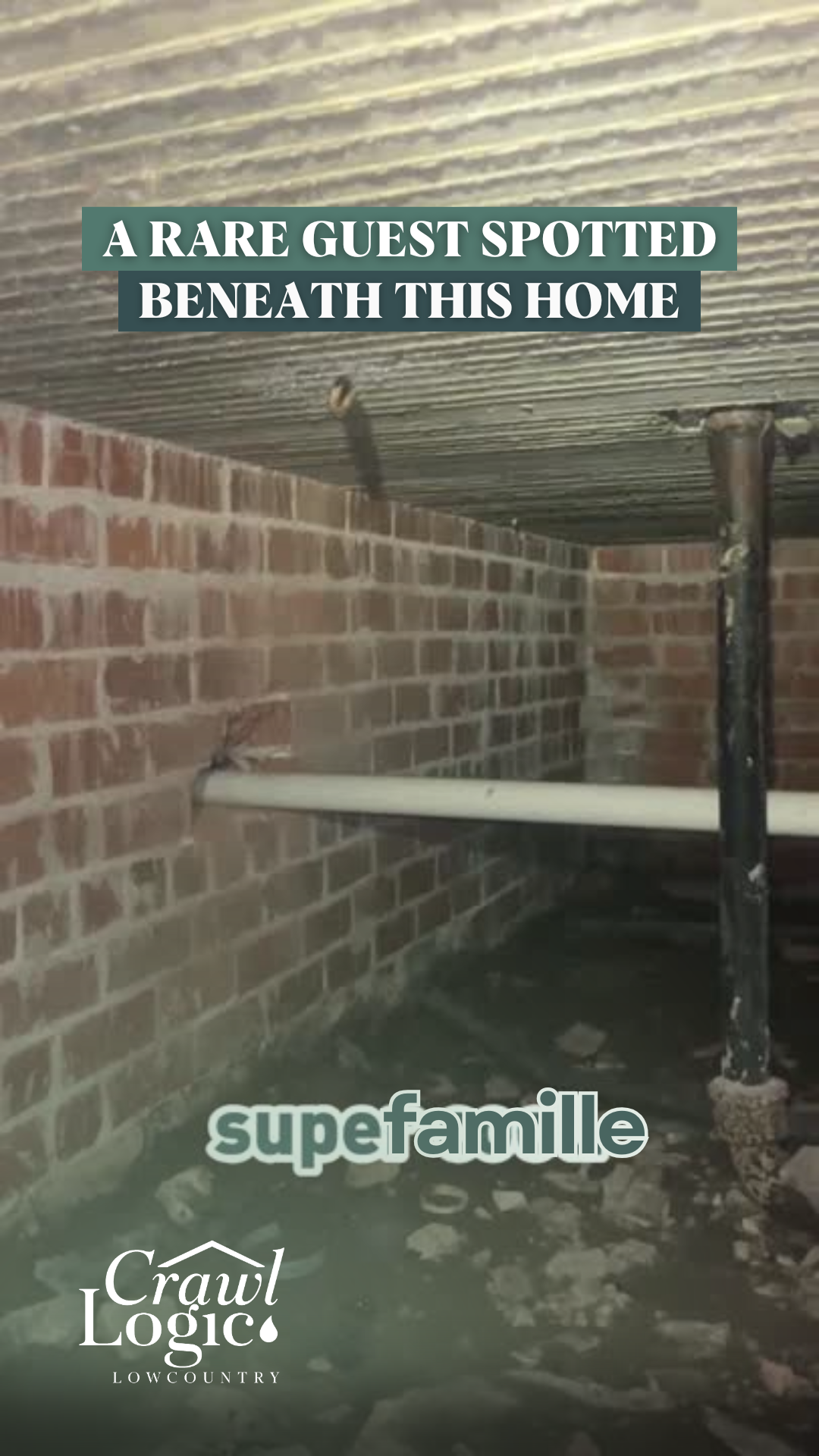Do Lowcountry Homes Really Need Crawl Space Insulation? A Surprising Answer
Crawl Logic Lowcountry
Insulation Isn’t Always the Answer
WHY MOST HOMES STAY WARM WITHOUT IT
"Do I need insulation in my crawl space?"
It's one of the most common questions we hear from Lowcountry homeowners.
With contractors pushing expensive add-ons and worries about cold floors, it's no wonder people are confused.
But here's something interesting: in crawl spaces we've encapsulated, even during this year's 20-degree cold snaps, the temperature never dropped below 54 degrees.
That's without any traditional insulation. Let's talk about why this matters for your home and wallet.
Welcome to Crawl Logic Lowcountry!
The Two Common Arguments for Insulation
When homeowners ask about crawl space insulation, they're usually worried about two things:
- Cold Floors
Most people think they need insulation to keep their floors warm during winter. Some contractors will try to sell you expensive rigid foam board for your walls, claiming it's essential for temperature control. But here in the Lowcountry, these expensive additions just aren't necessary. - Condensation Concerns
The other common worry is that without insulation, moisture will condense on the subfloor during summer when your AC is running. This sounds logical, but with a properly encapsulated crawl space and working dehumidifier, it's simply not an issue.
It's worth noting that some municipalities might require insulation for home sales. That's a separate issue from what your home actually needs to function properly. These requirements vary by location, so it's smart to check your local codes.
The Real Data
Let's talk real numbers. At Crawl Logic, we install live monitoring systems in every crawl space we encapsulate. This isn't just for show - it lets us and our customers track temperature, humidity, and even rodent activity in real time.
This winter gave us the perfect test. During those nights when outside temperatures dropped to 20 degrees, our monitored crawl spaces never got colder than 54 degrees. That's with no traditional insulation - just our heavy-duty poly barrier system. The numbers don't lie.
Why Traditional Insulation Logic Doesn't Apply Here
The truth is, most insulation advice comes from up north, where they deal with much different conditions than we face in the Lowcountry. Our climate needs its own solutions.
The poly barrier we use actually started as insulation for metal buildings. While it's been upgraded for crawl space use, it still provides enough insulation for our local climate without the need for expensive additions.
What Lowcountry Homeowners Really Need
Instead of focusing on unnecessary insulation, here's what actually matters in our climate:
- Proper moisture control through dehumidification
- Clear access to wooden structures for monitoring
- Real-time temperature and humidity tracking
- A system that's proven to work in our specific environment
Most importantly, we need to be able to see and monitor the wood we're protecting. Adding layers of insulation just creates hiding spots for moisture and makes it harder to spot problems before they become expensive repairs.
Making the Right Choice
Before you spend money on crawl space insulation, consider what you're really trying to achieve. If you're selling your home, check your local requirements - some municipalities do require it for sale. But if you're focused on protecting your home and keeping your floors comfortable, traditional insulation isn't the answer in our climate.
Here's what to ask any contractor who recommends crawl space insulation:
- Can you show me actual temperature data from local homes?
- How will this affect moisture monitoring?
- What specific benefits will I see in our Lowcountry climate?
- Is this truly necessary, or just an add-on?
At Crawl Logic, we believe in keeping things simple and effective. Our encapsulation system, combined with proper dehumidification and monitoring, gives you everything you need - no expensive extras required. We back this up with real data and a solid warranty on wood moisture content.


